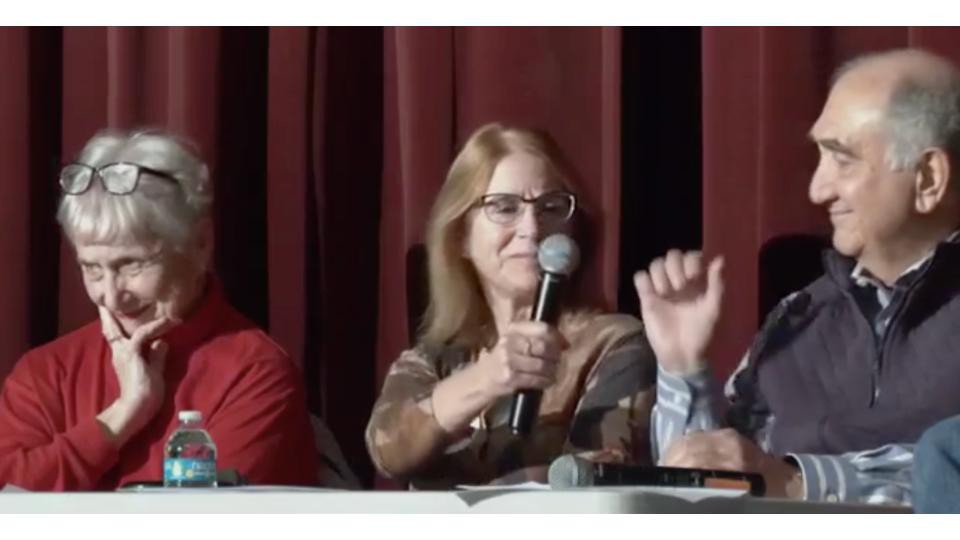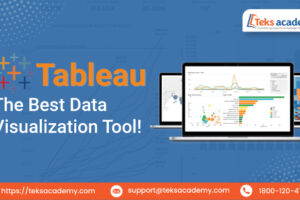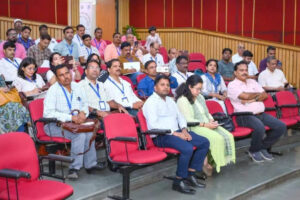
Teaching Civics in a Divided Age? Intergenerational Dialogue Should Go Both Ways
Research shows intergenerational programs can improve students’ empathy, literacy and civic engagement, but developing those relationships outside of the home are hard to come by.
“We are the most age segregated society,” said Mitchell. “There’s a lot of research out there on how seniors are dealing with their lack of connection to the community, because a lot of those community resources have eroded over time.”
While some schools like Jenks West Elementary in Oklahoma have built daily intergenerational interaction into their infrastructure, Mitchell shows that powerful learning experiences can happen within a single classroom. Her approach to intergenerational learning is supported by four takeaways.

1. Have Conversations With Students Before An Event
Before the panel, Mitchell guided students through a structured question-generating process. She gave them broad topics to brainstorm around and encouraged them to think about what they were genuinely curious to ask someone from an older generation. After reviewing their suggestions, she selected the questions that would work best for the event and assigned student volunteers to ask them.
To help the older adult panelists feel comfortable, Mitchell also hosted a brunch before the event. It gave panelists a chance to meet each other and ease into the school environment before stepping in front of a room full of eighth graders.
That kind of preparation makes a big difference, said Ruby Bell Booth, a researcher from the Center for Information and Research on Civic Learning and Engagement at Tufts University. “Having really clear goals and expectations is one of the easiest ways to facilitate this process for young people or for older adults,” she said. When students know what to expect, they’re more confident stepping into unfamiliar conversations.
That scaffolding helped students ask thoughtful, big-picture questions like: “What were the major civic issues of your life?” and “What was it like to be in a country at war?”
2. Build Connections Into Work You’re Already Doing
Mitchell didn’t start from scratch. In the past, she had assigned students to interview older adults. But she noticed those conversations often stayed surface level. “How’s school? How’s soccer?” Mitchell said, summarizing the questions often asked. “The moment for reflecting on your life and sharing that is pretty rare.”
She saw an opportunity to go deeper. By bringing those intergenerational conversations into her civics class, Mitchell hoped students would hear first-hand how older adults experienced civic life and begin to see themselves as future voters and engaged citizens. “[A majority] of baby boomers believe that democracy is the best system,” she said. “But a third of young people are like, ‘Yeah, we don’t really have to vote.’”
Integrating this work into existing curriculum can be practical and powerful. “Thinking about how you can start with what you have is a really great way to implement this kind of intergenerational learning without fully reinventing the wheel,” said Booth.
That could mean taking a guest speaker visit and building in time for students to ask questions or even inviting the speaker to ask questions of the students. The key, said Booth, is shifting from one-way learning to a more reciprocal exchange. “Start to think about little places where you can implement this, or where these intergenerational connections might already be happening, and try to enhance the benefits and learning outcomes,” she said.
3. Don’t Get Into Divisive Issues Off The Bat
For the first event, Mitchell and her students intentionally stayed away from controversial topics. That decision helped create a space where both panelists and students could feel more at ease. Booth agreed that it’s important to start slow. “You don’t want to jump headfirst into some of these more sensitive issues,” she said. A structured conversation can help build comfort and trust, which lays the groundwork for deeper, more challenging discussions down the line.
It’s also important to prepare older adults for how certain topics may be deeply personal to students. “A big one that we see divides with between generations is LGBTQ identities,” said Booth. “Being a young person with one of those identities in the classroom and then talking to older adults who may not have this similar understanding of the expansiveness of gender identity or sexuality can be challenging.”
Even without diving into the most divisive topics, Mitchell felt the panel sparked rich and meaningful conversation.
4. Leave Time For Reflection Afterwards
Leaving space for students to reflect after an intergenerational event is crucial, said Booth. “Talking about how it went — not just about the things you talked about, but the process of having this intergenerational conversation — is vital,” she said. “It helps cement and deepen the learnings and takeaways.”
Mitchell could tell the event resonated with her students in real time. “In our auditorium, the chairs are squeaky,” she said. “Whenever we have an event they’re not interested in, the squeaking starts and you know they’re not focused. And we didn’t have that.”
Afterward, Mitchell invited students to write thank-you notes to the senior panelists and reflect on the experience. The feedback was overwhelmingly positive with one common theme. “All my students said consistently, ‘We wish we had more time,’” Mitchell said. “‘And we wish we’d been able to have a more authentic conversation with them.’” That feedback is shaping how Mitchell plans her next event. She wants to loosen the structure and give students more space to guide the dialogue.
For Mitchell, the impact is clear. “The intergenerational voice brings so much more value and deepens the meaning of what you’re trying to do,” she said. “It makes civics come alive when you bring in people who have lived a civic life to talk about the things they’ve done and the ways they’ve connected to their community. And that can inspire kids to also connect to their community.”
Episode Transcript
Nimah Gobir: It’s 10am at Grace Skilled Nursing Facility in Oklahoma and a cluster of 4- and 5-year-olds bounce with excitement, their sneakers squeaking on the linoleum floor of the rec room. Around them, seniors in wheelchairs and armchairs follow along as a teacher counts off stretches. They shake out limb by limb and every once in a while a kid adds a silly flair to one of the movements and everyone cracks a little smile as they try and keep up.
[Audio of teacher counting with students]
Nimah Gobir: Kids and seniors are moving together in rhythm. This is just another Wednesday morning.
[Audio of grands exercising]
Nimah Gobir: These preschoolers and kindergartners go to school here, inside of the senior living facility. The children are here every day—learning their ABCs, doing art projects, and eating snacks alongside the senior residents of Grace – who they call the grands.
Amanda Moore: When it originally started, it was the nursing home. And beside the nursing home was an early childhood center, which was like a daycare that was tied to our district. And so the residents and the students there at our early childhood center started making some connections.
Nimah Gobir: This is Amanda Moore, the principal of Jenks West Elementary, the school inside of Grace. In the early days, the childhood center noticed the bonds that were forming between the youngest and oldest members of the community. The owners of Grace saw how much it meant to the residents.
Amanda Moore: They decided, okay, what can we do to make this a full-time program?
Amanda Moore: They did a renovation and they built on space so that we could have our students there housed in the nursing home every day.
Nimah Gobir: This is MindShift, the podcast about the future of learning and how we raise our kids. I’m Nimah Gobir. Today we’ll explore how intergenerational learning works and why it might be exactly what schools need more of.
Nimah Gobir: Book Buddies is one of the regular activities students at Jenks West Elementary do with the grands. Every other week, kids walk in an orderly line through the facility to meet their reading partners.
Nimah Gobir: Katy Wilson, a Kindergarten teacher at the school, says just being around older adults changes how students move and act.
Katy Wilson: They start to learn body control more than a typical student.
Katy Wilson: We know we can’t run out there with the grands. We know it’s not safe. We could trip somebody. They could get hurt. We learn that balance more because it’s higher stakes.
[Mariah giving students their grands assignment]
Nimah Gobir: In the common room, kids settle in at tables. A teacher pairs students up with the grands.
Nimah Gobir: Sometimes the kids read. Sometimes the grands do.
Nimah Gobir: Either way, it’s one-on-one time with a trusted adult.
Katy Wilson: And that’s something that I couldn’t accomplish in a typical classroom without all those tutors essentially built in to the program.
Nimah Gobir: And it’s working. Jenks West has tracked student progress. Kids who go through the program tend to score higher on reading assessments than their peers.
Katy Wilson: They get to read books that maybe we don’t cover on the academic side that are more fun books, which is great because they get to read about what they’re interested in that maybe we wouldn’t have time for in the typical classroom.
Nimah Gobir: Grandma Margaret enjoys her time with the kids.
Grandma Margaret: I get to work with the children, and you’ll go down to read a book. Sometimes they’ll read it to you because they’ve got it memorized. Life would be kind of boring without them.
Nimah Gobir: There’s also research that kids in these types of programs are more likely to have better attendance and stronger social skills. One of the long-term benefits is that students become more comfortable being around people who are different from them. Like a grand in a wheelchair, or one who doesn’t communicate easily.
Nimah Gobir: Amanda told me a story about a student who left Jenks West and later attended a different school.
Amanda Moore: There were some students in her class that were in wheelchairs. She said her daughter naturally befriended these students and the teacher had actually recognized that and told the mom that. And she said, I truly believe it was the interactions that she had with the residents at Grace that helped her to have that understanding and empathy and not feel like there was anything that she needed to be worried about or afraid of, that it was just a part of her every day.
Nimah Gobir: The program benefits the grands too. There’s evidence that older adults experience improved mental health and less social isolation when they spend time with children.
Nimah Gobir: Even the grands who are bedbound benefit. Just having kids in the building—hearing their laughter and songs in the hallway—makes a difference.
Nimah Gobir: So why don’t more places have these programs?
Amanda Moore: You really have to have everybody on board.
Nimah Gobir: Here’s Amanda again.
Amanda Moore: Because both sides saw the benefits, we were able to create that partnership together.
Nimah Gobir: It’s likely not something that a school could do on its own.
Amanda Moore: Because it is expensive. They maintain that facility for us. If anything goes wrong in the rooms, they’re the ones that are taking care of all of that. They built a playground there for us.
Nimah Gobir: Grace even employs a full-time liaison, who is in charge of communication between the nursing home and the school.
Amanda Moore: She is always there and she helps organize our activities. We meet monthly to plan out the activities residents are going to do with the students.
Nimah Gobir: Younger people interacting with older people has tons of advantages. But what if your school doesn’t have the resources to build a senior center? After the break, we look at how a middle school is making intergenerational learning work in a different way. Stay with us.
Nimah Gobir: Before the break we learned about how intergenerational learning can boost literacy and empathy in younger children, not to mention a bunch of benefits for older adults. In a middle school classroom, those same ideas are being used in a new way—to help strengthen something that many people worry is on shaky ground: our democracy.
Ivy Mitchell: My name is Ivy Mitchell. I teach eighth grade civics in Massachusetts.
Nimah Gobir: In Ivy’s civics class, students learn how to be active members of the community. They also learn that they’ll need to work with people of all ages. After more than 20 years of teaching, Ivy noticed that older and younger generations don’t often get a chance to talk to each other—unless they’re family.
Ivy Mitchell: We are the most age-segregated society. This is the time when our age segregation has been the most extreme. There’s a lot of research out there on how seniors are dealing with their lack of connection to the community, because a lot of those community resources have eroded over time.
Nimah Gobir: When kids do talk to adults, it’s often surface level.
Ivy Mitchell: How’s school? How’s soccer? The moment for reflecting on your life and sharing that is pretty rare.
Nimah Gobir: That’s a missed opportunity for all kinds of reasons. But as a civics teacher Ivy is especially concerned about one thing: cultivating students who are interested in voting when they get older. She believes that having deeper conversations with older adults about their experiences can help students better understand the past—and maybe feel more invested in shaping the future.
Ivy Mitchell: Ninety percent of baby boomers believe that democracy is the best way, the only best way. Whereas like a third of young people are like, yeah, you know, we don’t have to vote.
Nimah Gobir: Ivy wants to close that gap by connecting generations.
Ivy Mitchell: Democracy is a very valuable thing. And the only place my students are hearing it is in my classroom. And if I could bring more voices in to say no, democracy has its flaws, but it’s still the best system we’ve ever discovered.
Nimah Gobir: The idea that civic learning can come from cross-generational relationships is backed by research.
Ruby Bell Booth: I do a lot of thinking about youth voice and institutions, youth civic development, and how young people can be more involved in our democracy and in their communities.
Nimah Gobir: Ruby Bell Booth wrote a report about youth civic engagement. In it she says together young people and older adults can tackle big challenges facing our democracy—like polarization, culture wars, extremism, and misinformation. But sometimes, misunderstandings between generations get in the way.
Ruby Bell Booth: Young people, I think, tend to look at older generations as having sort of antiquated views on everything. And that’s largely in part because younger generations have different views on issues. They have different experiences. They have different understandings of modern technology. And as a result, they sort of judge older generations accordingly.
Nimah Gobir: Young people’s feelings towards older generations can be summed up in two dismissive words.
Nimah Gobir: “OK, Boomer,” which is often said in response to an older person being out of touch.
Ruby Bell Booth: There’s a lot of humor and sass and attitude that young people bring to that relationship and that divide.
Ruby Bell Booth: It speaks to the challenges that young people face in feeling like they have a voice and they feel like they’re often dismissed by older people—because often they are.
Nimah Gobir: And older people have thoughts about younger generations too.
Ruby Bell Booth: Sometimes older generations are like, okay, it’s all good. Gen Z is going to save us.
Ruby Bell Booth: That puts a lot of pressure on the very small group of Gen Z who is really activist and engaged and trying to make a lot of social change.
Nimah Gobir: One of the big challenges that educators face in creating intergenerational learning opportunities is the power imbalance between adults and students. And schools only amplify that.
Ruby Bell Booth: When you move that already existing age dynamic into a school setting where all the adults in the room are holding additional power—teachers giving out grades, principals calling students to their office and having disciplinary powers—it makes it so that those already entrenched age dynamics are even more challenging to overcome.
Nimah Gobir: One way to offset this power imbalance could be bringing people from outside of the school into the classroom, which is exactly what Ivy Mitchell, our teacher in Boston, decided to do.
Ivy Mitchell : Thank you for coming today.
Nimah Gobir: Her students came up with a list of questions, and Ivy assembled a panel of older adults to answer them.
Ivy Mitchell (event): The idea behind this event is I saw a problem and I’m trying to solve it. And the idea is to bring the generations together to help answer the question, why do we have civics? I know a lot of you wonder about that. And also to have them share their life experience and start building community connections, which are so vital.
Nimah Gobir: One by one, students took the mic and asked questions to Berta, Steve, Tony, Eileen, and Jane. Questions like…
Student: Do any of you think it’s hard to pay taxes?
Student: What is it like to be in a country at war, either at home or abroad?
Student: What were the major civic issues of your life, and what experiences shaped your views on these issues?
Nimah Gobir: And one by one they gave answers to the students.
Steve Humphrey: I mean, I think for me, the Vietnam War, for example, was a huge issue in my lifetime, and, you know, still is. I mean, it shaped us.
Tony Surge: Yeah, we had, in our generation, we had a lot going on at once. We also had a big civil rights movement, Martin Luther King, that you probably will study, all very historical, if you go back and look at that. So during our generation, we saw a lot of major changes inside the United States.
Eileen Hill: The one that I kind of remember, I was young during the Vietnam War, but women’s rights. So back in ‘74 is when women could actually get a credit card without—if they were married—without their husband’s signature.
Nimah Gobir: And then they flipped the panel around so elders could ask questions to students.
Eileen Hill: What are the concerns that those of you in school have now?
Eileen Hill: I mean, especially with computers and AI—does the AI scare any of you? Or do you feel that this is something you can really adapt to and understand?
Student: AI is starting to do new things. It can start to take over people’s jobs, which is concerning. There’s AI music now and my dad’s a musician, and that’s concerning because it’s not good right now, but it’s starting to get better. And it could end up taking over people’s jobs eventually.
Student: I think it really depends on how you’re using it. Like, it can definitely be used for good and helpful things, but if you’re using it to fake images of people or things that they said, it’s not good.
Nimah Gobir: When Ivy debriefed with students after the event, they had overwhelmingly positive things to say. But there was one piece of feedback that stood out.
Ivy Mitchell: All my students said consistently, we wish we had more time and we wish we’d been able to have a more authentic conversation with them.
Ivy Mitchell: They wanted to be able to talk, to really get into it.
Nimah Gobir: Next time, she’s planning to loosen the reins and make space for more authentic dialogue.
Some of Ruby Bell Booth’s research inspired Ivy’s project. She noted some things that make intergenerational activities a success. Ivy did a lot of these things!
Nimah Gobir: One: Ivy had conversations with her students where they came up with questions and talked about the event with students and older folks. This can make everyone feel a lot more comfortable and less nervous.
Ruby Bell Booth: Having really clear goals and expectations is one of the easiest ways to facilitate this process for young people or for older adults.
Nimah Gobir: Two: They didn’t get into tough and divisive questions during this first event. Maybe you don’t want to jump headfirst into some of these more sensitive issues.
Nimah Gobir: Three: Ivy built these connections into the work she was already doing. Ivy had assigned students to interview older adults before, but she wanted to take it further. So she made those conversations part of her class.
Ruby Bell Booth: Thinking about how you can start with what you have I think is a really great way to start to implement this kind of intergenerational learning without fully reinventing the wheel.
Nimah Gobir: Four: Ivy had time for reflection and feedback afterward.
Ruby Bell Booth: Talking about how it went—not just about the things you talked about, but the process of having this intergenerational conversation for both parties—is vital to really cement, deepen, and further the learnings and takeaways from the opportunity.
Nimah Gobir: Ruby doesn’t say that intergenerational connections are the only solution for the problems our democracy faces. In fact, on its own it’s not enough.
Ruby Bell Booth: I think that when we’re thinking about the long-term health of democracy, it needs to be grounded in communities and connection and reciprocity. A piece of that, when we’re thinking about including more young people in democracy—having more young people turn out to vote, having more young people who see a pathway to create change in their communities—we have to be thinking about what an inclusive democracy looks like, what a democracy that welcomes young voices looks like. Our democracy has to be intergenerational.
Source link



